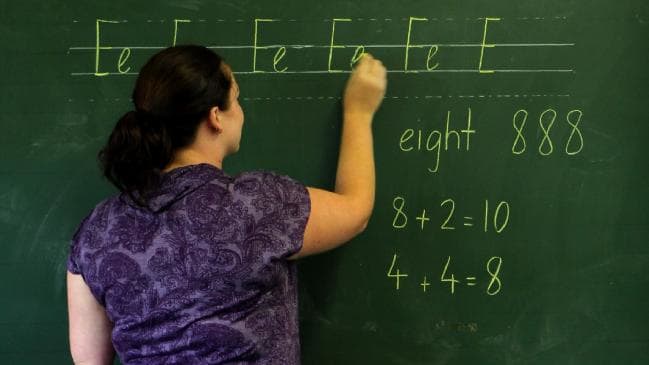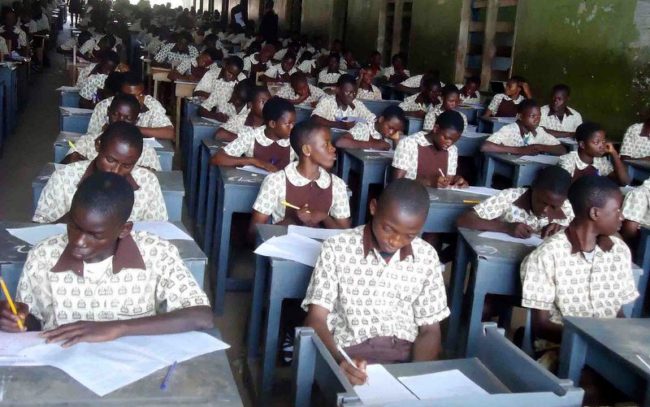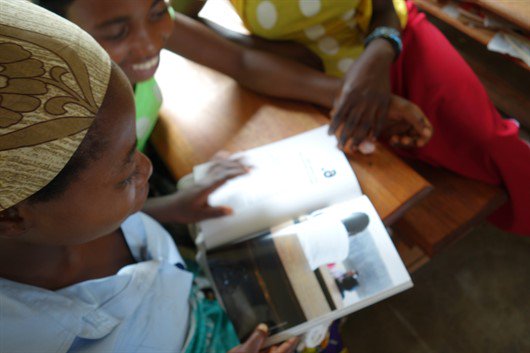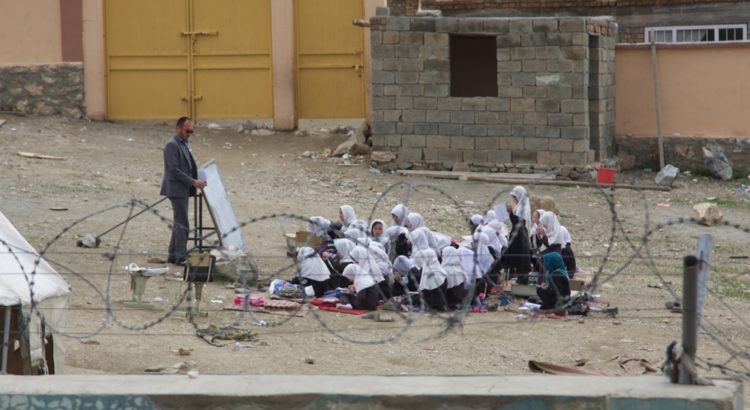Por: Lourdes Velásquez de Urbáez
Venezuela atraviesa desde hace veinte años una enriquecedora etapa de cambios y nuevas posturas que la estremecen en todas las dimensiones de la vida. La educación no es la excepción. En medio de esta guerra feroz, la vida continúa en las aulas pero las heridas de la guerra están en la pizarra que el docente no puede borrar por mayores intentos individuales y colectivos, los niños sin comer, sin bañarse, sin ilusiones ni esperanza continúan en su ida y vuelta a la escuela.
Importante es preguntarse ¿Por qué? ¿Qué los mueve a ir a la escuela? Importante y fácil adivinar que sus padres los llevan para poder irse tranquilos a trabajar, otra razón pudiera ser que los llevan porque en el colegio les aseguran la comida a través del programa PAE, otra puede ser porque no les gusta quedarse solos es mejor ir a jugar con los amiguitos, con ellos se le olvida el hambre y la sed, la desnudes y tantas carencias.
¿Por qué el maestro continúa en el ejercicio de la docencia? El sueldo no alcanza para pagar el transporte que lo llevará a la escuela, ni para la comida de sus hijos, ni para un lapicero, un cuaderno. ¿Por qué? Son muchos porqueses juntos, con los mismos interrogadores y los mismos respondedores. Entonces por qué no nos juntamos a buscar esas respuestas y mientras tanto tratemos de dar solución, desde nuestra carencia, a la carencia del otro más débil pero que es nuestra responsabilidad, el niño, la niña, él y la joven.
Lo que proponemos hoy es buscar en nosotros, no en los otros, alguna alternativa para palear esta situación que no va a cambiar sola, requiere un empujón que tú y yo le demos. Entonces, cómo empujar? no todos tenemos la misma posibilidad y fuerza para emprender la tarea de la misma forma; además es muy compleja y no todos podremos hacer lo mismo. Todos tenemos algo que dar, pues somos maestros y llegamos a nuestra formación inicial en pregrado, cargados de sueños y metas por cumplir; por lo que todos podemos hacer un poquito.
Además del podemos, se requiere el debemos, por cuanto es nuestra obligación profesional, son los deberes laborales y deontológicos los que imponen, en la mayoría de los casos, a buscar dentro de nuestra condición de maestros ese puedo que la guerra, la crisis, el hambre y la necesidad ha sepultado en la profundidad de nuestras vidas. Somos profesionales responsables, dignos del título que ostentamos, de la Ley de Educación que estudiamos y de esos niños que la Patria, la Escuela y los Padres nos han encomendado. Así que con todo esto en nuestro equipaje, nos dedicamos día a día a dar vida en un aula.
Hasta aquí, muy bien, sin embargo además del podemos y el debemos ¿cómo está el queremos? Realmente queremos continuar en esta profesión que ocasiona gastos económicos, de salud, emocionales, familiares, entre otros?
Pues si no queremos, no hay podemos ni debemos que valga. Este es el momento para que lo pienses. Este momento de dura lucha, al momento de servir la comida en la mesa, de vestir a nuestros hijos, de buscar y no encontrar un medicamento; en este momento es cuando todo esto compite con el queremos y la respuesta no puede darse en la inmediatez de todas las cosas de esta sociedad con sus valores emergentes.
Esperen, por favor, aún no he respondido, déjame pensar, conciencia, déjame pensar docencia. Es el momento de buscar allá en el fondo de tu corazón esa respuesta porque si no hay querer en esto que supere los sufrires de la realidad, serás una persona responsable, capacitada pero con una amargura que enfermará tu vida, la de los estudiantes a tu cargo y la de tu familia. Si no hay quereres puedes hacer tres cosas: huir, aprender a amar lo que haces y no amas, luchar para que las herramientas del poder y del deber faciliten la labor de asumir la Docencia con todas las limitaciones de un pueblo devastado y con todo el amor de un maestro enamorado.
Si vas a huir, no sigas leyendo, retírate dignamente con la satisfacción de haber cumplido con tu deber a pesar de tantas carencias y hasta maltrato. De lo contrario, te quedan las otras dos alternativas que, caminando juntas o juntándolas en tu caminar te proporcionarán una ilusión por la que ir a la escuela.
Algunos autores expresan que sonreír cambia el mundo, Sonríe cada vez que puedas a tus niños, es la primera tarea para aprender a amar la docencia; pero no sonrías nunca a la injusticia, a la mentira, al atropello y a la vejación; allí comienza la otra alternativa, la lucha, orientada por un fin, la Educación de esos niños que serán los profesionales que muy pronto tendrán la responsabilidad de dirigir la sociedad en todos sus aspectos, uno de ellos, el más importante, la Educación y recordarán a su maestra que luchó por un mundo mejor, que mientras se secó una lágrima con una mano, con la otra empuñó el trabajo, el ejercicio de la Docencia como el arma liberadora de los pueblos que tenemos los Educadores.
Y así enseñaremos para la libertad, como Simón enseñó a Simón, para lo grande y para lo hermoso. Nadie ha dicho que será fácil, las canas de esta maestra encubren muchas lágrimas y sin sabores y mucha indignación y mucho reclamo hecho con la pasión de quien sabe que al final, la que llaman conciencia reclamará por lo que habiendo podido hacer, no hiciste, y cuando un joven te robe pensarás ese pudo ser mi alumno y cuando te seda el puesto en el bus también pensarás lo mismo.
Muchas veces no acertaremos pues no siempre las políticas educativas ayuda al resultado feliz de la lucha y del amor; sin embargo el trabajo que hemos realizado, aunque mal pagado y con limitaciones será un aprendizaje para pensar por qué no lo logré? Posiblemente estuvimos solos en esta lucha, tal vez no tuvimos acceso a una formación continua que nos permitiera utilizar las herramientas que el mundo utiliza para luchar contra la labor del maestro.
Alguien dijo una vez “si no puedes vencer al enemigo, únete a él y lo vencerás en su propio terreno”. Es el caso de las nuevas tecnologías, con los video juegos atractivos para los niños que los dejan embelezados, suprimiendo toda su capacidad para pensar.
Qué tal si nos unimos a ellos, si creamos nuestros propios videos juegos didácticos y aprovechamos que en Venezuela la mayoría de los niños tienen una canaimita!! Y los padres podrán ayudarlos si no tienen ningún conocimiento de esto? Será que podremos enseñarlos? Y qué hacer con los padres que le quitan la canaimita a los niños para hacer negocios, juegos de azar, etc.
Todo esto está en la mesa y sólo el maestro conoce la realidad que vive cada niño, con la complejidad de que cada niño es una situación diferente.
Los niños trabajadores, explotados con trabajos infames, los niños bachaqueros son nuestra responsabilidad. No somos instructores, somos Educadores, vamos un poco más allá de los contenidos conceptuales, exigidos por los programas.
Acá juega un papel fundamental la Subjetividad del Educador que sale al encuentro de la Subjetividad del Niño y ellos se encuentran, hoy, mañana, no sabemos pero ese encuentro ocurre si somos capaces de tender puentes en lugar de paredes entre el niño y nosotros.
Éste es otro llamado, tender puentes entre tú y el niño; entre tú y el conocimiento; entre tú y la familia, o la institución responsable de él, o la calle, o el explotador que lo tiene trabajando.
Luego llevar a casa sus cuadernos, leer sus escritos, mirar sus dibujos. La tarea para el hogar no es para el niño, es para el maestro. El niño pasó toda la mañana y media tarde trabajando contigo. También como todos nos cansamos pero la tarea continúa un día y otro día.
Se acabó el dinero para llegar a la escuela, tienes que ir, hay paro de transporte, tienes que ir, está lloviendo, tienes que ir, un sol muy fuerte, tienes que ir, te sientes mal, tienes que ir porque en la escuela te espera tu vida: la Docencia y esas vocecitas que te dicen ¿Qué tiene maestra? Eso te hace olvidar tu cansancio.
Pero ahí se impone también, con el amor, la lucha. Cerca de tu casa hay una escuela, cerca de todos hay una escuela y ninguno de nosotros trabajamos ahí, nos encontramos en sentido contrario de nuestro caminar, con otros maestros que vienen de muy lejos, de donde yo trabajo, a dictar clases en la escuela que está ubicada cerca de mi casa.
La realidad comunitaria que viven diariamente nuestros niños es diferente a la que vivimos sus maestros. Nuestros alumnos no son nuestros vecinos y a la inversa. Si pudiéramos comenzar con un poco de organización en este sentido, tendríamos más tiempo para dedicarle a esos niños de la Patria; pudiéramos reconocer y vivir en nuestra cotidianidad los horarios de las faenas propias de sus comunidades; así entenderíamos a por qué el hijo del pescador llega más tarde o por qué en época de la cosecha los niños no van a la escuela, por citar algunos ejemplos, en los que aún, fuera del aula estaríamos compartiendo la vida con nuestros niños.
Con esta pequeña acción se juntarían en la vida del maestro y la maestra, el poder, el deber y el querer
Éste sería un buen regalo a la Educación hoy en su Día Internacional!!
Lourdes Velásquez de Urbáez
Coordinadora del Centro Internacional Miranda / Capítulo Monagas
Colaboradora de Otra Voces en Educación


















 Users Today : 21
Users Today : 21 Total Users : 35460152
Total Users : 35460152 Views Today : 35
Views Today : 35 Total views : 3418818
Total views : 3418818